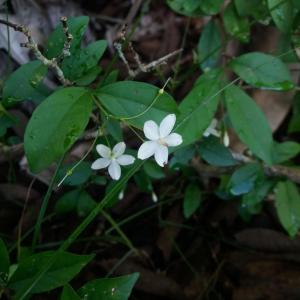文章
Andrea
2017年03月13日

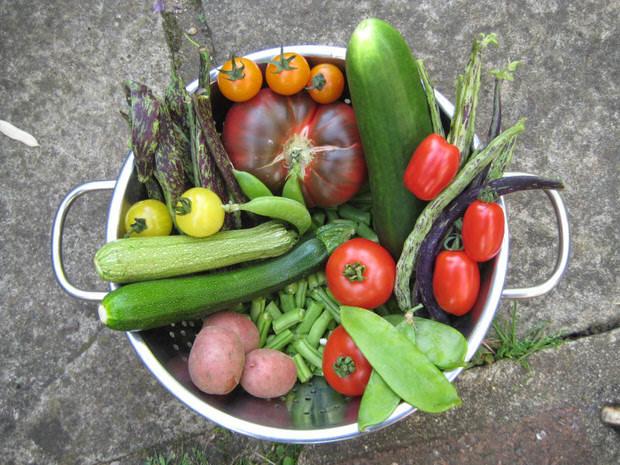
It’s that time of year again! Late summer and early fall is prime time for fresh vegetables in the garden. If you were lucky enough to grow some of the good stuff in your little spot this year, here are some easy tips to help you harvest your late summer vegetables at the right time for the best flavor, nutrition and texture.
Beans
Beans are a crop that should be harvested every other day as they continue to produce new beans. Pick when the beans are just under the maximum size for their type, and always pick late in the day, never in the morning. Picking beans when there is dew still present encourages mildew diseases.
Corn
Corn is ready when the silks start to turn brown but aren’t dried up yet. Kernels should be filled with a milky white juice if you cut one open. Corn starts to lose it’s sweetness as soon as it’s picked, so try to pick right before cooking.

Cucumbers
Harvest cucumbers as soon as they are the mature size for their type. If you allow them to grow large, they will become bitter. Harvest often to stimulate the plant to produce more, at least every couple of days.

Eggplant
Eggplant should be harvested when grown to mature size, and are smooth and shiny. If the seeds inside are dark, they were harvested late.
Herbs
Cut back most herbs often to keep them from blooming, and dry any herbs you cannot use right away. You can also freeze herbs as well. Follow this tutorial for instructions.
Melons
Cantaloupes: Pick when they are heavy and tan-colored with a slight yellowish cast. When ripe, a cantaloupe’s netting becomes harder and raised, and a crack forms around the stem where it touches the fruit. The melons should slip easily off the vines with a quick pull, but should not have already fallen off. The fruits get slightly softer at the bottom end and they smell fragrant.
Watermelons develop a dull green cast and have a light patch at the bottom that changes from green to light yellow when mature. Also, the leaf on the tendril nearest the fruit turns brown and withers. The skin should be hard–difficult to pierce with a fingernail. Some people say they can knock on a melon to detect a perfect hollow tone.
Pumpkins and Winter Squash
When the shell has developed it’s color and the rind cannot be pierced with a fingernail, they are ready. Cut 2-3 inch stem and allow to ripen in the field for 10 days. Store in a cool place.

Summer Squash
Summer squash is another one that most gardeners let grow too large…bigger is not always better! Larger fruits get seedy and watery, so pick when about 6 inches long. Round varieties can be picked at 3-4 inches.
Peppers
Peppers taste best when allowed to fully color before picking.
Tomatoes
Tomatoes are best when fully ripened to a deep color in the sun, but you can pick them early if you are having issues with cracking or cold nights. Do not ripen in the frig, on a counter is best.
Learning to harvest your vegetables at the right time helps them have better flavor and greater levels of nutrients. And let’s face it, it gives us bragging rights around the neighborhood as well!
1
0
文章
Selina
2017年03月13日

Want to know how to make a small garden looks bigger and better? Well, here are a few tips that’ll help you.

You can’t make a limited space garden looks bigger, but by some planning you can create an illusion. Let’s see, how?
1.
If there is a lack of space in your garden, use foldable furniture. Foldable furniture is space saving, light and compatible; plus they come in variety.
Reason: They don’t take much space and are easily movable, that’s why using foldable furniture is better.
2.
Use large planters of cool colors instead of small, although large planters take more space but you can grow more combination of plants in them.
Reason: Small planters litter up the space, they don’t hold much soil and you need to water them regularly.
3.
Grow plants that do not cover much space, if you still want to grow them— do regular pruning.
Reason: A bigger plant that is invasive or spread a lot looks bigger for the garden they are in.
4.
Use vertical space, obviously this will create more space. If you have a balcony or terrace garden, remember this rule– use 60% vertical space and 40% horizontal space.
Reason: By using vertical space, you can add up more space in your garden.
5
Tip number five is related to number four. Plant more vines and climbers than shrubs and bushes.
Reason: Climbers cover up more vertical space.
6.
Create a view point or a focal point in your garden that’ll attract eyes towards it.
Reason: A view point creates an enigma of wideness— use warm colors in its creation.
7.
Choose colors wisely whether it is about flowers or pots or furniture, always remember to use cool colors like blue, pink, green or white near the hedges, boundaries or walls of your garden and warm colors in the center.
Reason: Cool colors have the tendency to blend in each other; they create an illusion of enlarge space, whereas warm colors are highlight the space.

You can’t make a limited space garden looks bigger, but by some planning you can create an illusion. Let’s see, how?
1.

If there is a lack of space in your garden, use foldable furniture. Foldable furniture is space saving, light and compatible; plus they come in variety.
Reason: They don’t take much space and are easily movable, that’s why using foldable furniture is better.
2.

Use large planters of cool colors instead of small, although large planters take more space but you can grow more combination of plants in them.
Reason: Small planters litter up the space, they don’t hold much soil and you need to water them regularly.
3.

Grow plants that do not cover much space, if you still want to grow them— do regular pruning.
Reason: A bigger plant that is invasive or spread a lot looks bigger for the garden they are in.
4.

Use vertical space, obviously this will create more space. If you have a balcony or terrace garden, remember this rule– use 60% vertical space and 40% horizontal space.
Reason: By using vertical space, you can add up more space in your garden.
5

Tip number five is related to number four. Plant more vines and climbers than shrubs and bushes.
Reason: Climbers cover up more vertical space.
6.

Create a view point or a focal point in your garden that’ll attract eyes towards it.
Reason: A view point creates an enigma of wideness— use warm colors in its creation.
7.

Choose colors wisely whether it is about flowers or pots or furniture, always remember to use cool colors like blue, pink, green or white near the hedges, boundaries or walls of your garden and warm colors in the center.
Reason: Cool colors have the tendency to blend in each other; they create an illusion of enlarge space, whereas warm colors are highlight the space.
1
1
求助
Michelangelo DaVinci
2017年03月04日

i juat got this fellow and i dont know her name. help would be really appreciated!
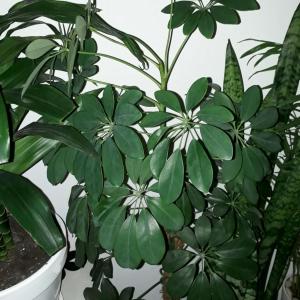

0
0
meriunkat:a nickname is dwarf umbrella tree
sunnyzou:Schefflera arboricola
求助
Elizabeth Gardner
2017年02月27日

I would like help identifying this succulent.
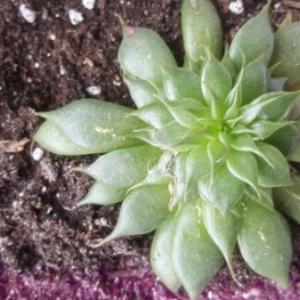
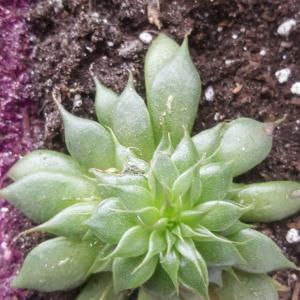




5
0
sophieDD:maybe it's "silver star crown"
Erin:Graptoveria ‘Silver Star’
文章
Joss
2017年02月18日


If you are gardening on a budget, have we got the plant for you! How can a plant choice help you spend less and garden more? Well if you grow Butterfly Bush, (Buddleia) its easy… here’s why.
Butterfly Bush is one of the easiest shrubs to grow. It is low maintenance, requiring little in the way of fertilizer, and is resistant to pests and disease. So you spend less on upkeep. Say that about a rose bush! The gray green leaves are the perfect backdrop for any garden, and they have a fine texture and arching shape that many gardens lack.
It grows fast. And we mean FAST.
Butterfly Bush will fill a corner, create a hedge or become the background of a large planting bed in one season. It grows 5-10 feet high and as wide, so it can make fast impact on your yard for little cash. Don’t bother with the $40 ten gallon size from the nursery. Buy them in four inch pots for $3, wait one season and have full size bushes!
It attracts, of all things, butterflies!
And occasionally hummingbirds, and the finches love to hang out there too. Forget a butterfly feeder, plant this shrub.
It has beautiful flowers perfect for cutting, and lots of them all summer long.
Butterfly Bush produces panicles of pretty flowers that range from a few inches to over a foot long depending on variety. The most common colors are pink and purple, but there are also blue, white and a yellow variety. The yellow happens to be fragrant as well, although the flower panicles are smaller. These all make great cut flowers on long stems, and bloom from June to September.
Drought Resistant means it saves water (and money!) too!

Butterfly Bush Growing Basics
Butterfly Bush will grow in poor soil, although prefers a mid range loam. Do not fertilize much as that will produce too much green growth, and make it lanky with few flowers.
Give them room…ten feet across is not uncommon.
Water well the first year to develop a good root system, and they are moderately drought resistant after that.
Cut back to 12-18 inches from the ground in early spring. That may sound severe, but this will create a more dense uniform plant with larger flowers. Trust us, it will rebound to its large size by June. This is the secret to attractive shrubs that make your garden look like a prize winning spot!
Don’t be in a hurry in the spring to see new growth, as Butterfly Bush is a late sleeper. It will put out new leaves a little later than a lot of other shrubs, so be patient, it catches up fast.
They do well down to Zone 5, and can be semi evergreen in areas that do not freeze. They are deciduous in colder areas, but since you cut it back to the ground in early spring anyway, it doesn’t matter.
Be aware, some varieties can be invasive. If you have that problem in your area, look for “sterile” varieties that do not self seed.
Our Fav Varieties!
Tried and True, “Pink Delight” is still the industry standard, with uniform growth and large, deep pink flowers. Other pink varieties we love” “Miss Molly” and “Royal Red”.
If you love fragrance, try “Honeycomb”. Yellow flowers and a delicious scent.
A dwarf variety that is suitable for large containers is “Blue Chip” This is also a sterile variety.
“Purple Emperor” is a fantastic deep purple with long panicles of flowers, and for a sparkling white variety, try “White Ball” or “White Profusion”
There are dozens of varieties from local and online nurseries, even selections with variegated foliage!
If you garden on a budget, Butterfly Bush is a proven winner that will quickly establish an attractive, full garden for little money, and basic upkeep. Already have it growing in your garden? Whats your experience with it?
3
0
求助
JustCaffeine
2017年01月29日

Could somebody please help me identify these adorable little succulents? I got these cuties for a pretty good deal at a local plant shop yesterday. They are very small, the tallest one measuring at around one inch tall. I'd just like to know if there are any particular caretaking requirements for it compared to my other succulents and cacti, and just because I like to be able to identify my plants. #succulent #help


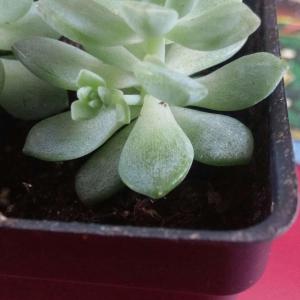



1
0
Morpheus M Clerk:looks like Ice plant but I'm not sure that's what it is precisely, from the looks of it it's ready to take over whatever area you plant it in, so be ready for that!
Clair-Lee:It seems that it was over water and lack of sunlight. In my opinion, you should take care of it just like your other Echeveria. One or two months later, it may look different and you can distinguish it easier.
小心翼翼:Oh,good looking
绿手指干货:More sunshine, less water, is so esay!
Succulent Hauz
2017年01月02日
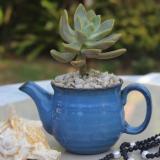
Can anyone help me name this Huernia? It doesn't stand at all lookes like a hanging one.
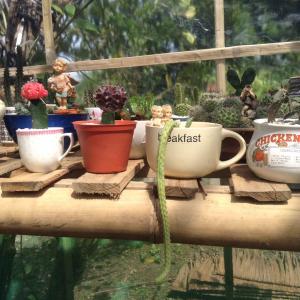

3
0
stone:@Succulent Hauz Similar to Selenicereus innesii.
Succulent Hauz:@Andy yeah but it doesnt have hairs like that
Andy:Similar to Aporocactus flagelliformis (L.) Lem
GFinger
2016年07月19日

TIPS📝
We take an interest in gardening for a variety of reasons—higher quality produce, exercise in the great outdoors etc.
When you're just getting started, gardening can be intimidating.GFinger will help you learn the basics, starting with these steps.
Step 1: Gather Your Gear
Proper tools provide us more comfort and efficiency, which means less work for us!
Here's what you'll need to get started.
1 Trowel - Used for weeding and digging small holes.
2 Gardening gloves - As much as we like getting our hands dirty, we don’t like getting them that dirty. A good pair of gloves can also protect your hands from bugs and prickly plants and weeds.
3 Sun hat - For UV protection, make sure this is wide-brimmed and cinches.
4 Watering can or hose – What you need will vary depending on your garden’s water needs and proximity to your water source.
5 Wheelbarrow - For larger gardens, you'll need one to transport mulch, dirt, and compost.
6 Roundhead shovel - For digging larger holes.
7 Rake - Ideal for spreading mulch, and gathering or transporting debris that has collected around your garden and between plants.
8 Shears - Use to prune away browning leaves or snipping herbs.
9 Pitchfork - This is an essential tool if you are creating a compost heap or pile.
Continued…



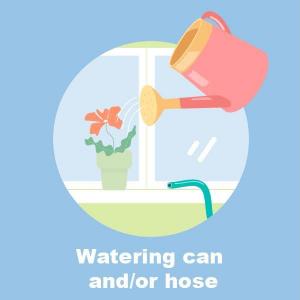
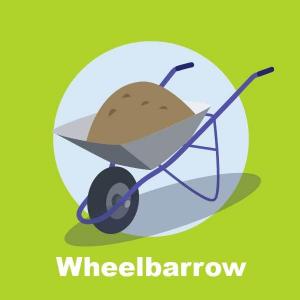
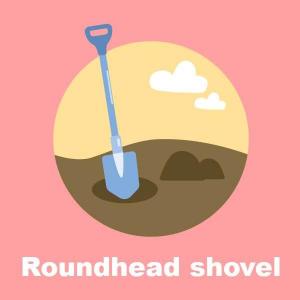



We take an interest in gardening for a variety of reasons—higher quality produce, exercise in the great outdoors etc.
When you're just getting started, gardening can be intimidating.GFinger will help you learn the basics, starting with these steps.
Step 1: Gather Your Gear
Proper tools provide us more comfort and efficiency, which means less work for us!
Here's what you'll need to get started.
1 Trowel - Used for weeding and digging small holes.
2 Gardening gloves - As much as we like getting our hands dirty, we don’t like getting them that dirty. A good pair of gloves can also protect your hands from bugs and prickly plants and weeds.
3 Sun hat - For UV protection, make sure this is wide-brimmed and cinches.
4 Watering can or hose – What you need will vary depending on your garden’s water needs and proximity to your water source.
5 Wheelbarrow - For larger gardens, you'll need one to transport mulch, dirt, and compost.
6 Roundhead shovel - For digging larger holes.
7 Rake - Ideal for spreading mulch, and gathering or transporting debris that has collected around your garden and between plants.
8 Shears - Use to prune away browning leaves or snipping herbs.
9 Pitchfork - This is an essential tool if you are creating a compost heap or pile.
Continued…









6
0
GFinger
2016年06月23日

GET✅:If you feel puzzled at growing flowers,just ask for help.
1How to post SOS;
2How to answer flower friends' SOS


1How to post SOS;
2How to answer flower friends' SOS


3
0
Citibear23:Asparagus fern
GFinger
2016年06月21日

Tips🌿
Possible health benefits of rosemary
Rich source of antioxidants and anti-inflammatory compounds- these are thought to help boost the immune system and improve blood circulation. Laboratory studies have shown rosemary to be rich in antioxidants, which play an important role in neutralizing harmful particles called free radicals.
Improving digestion - In Europe rosemary is often used to help treat indigestion - Germany's Commission E has approved it for the treatment of dyspepsia. However, it should be noted that there is currently no meaningful scientific evidence to support this claim.
Enhancing memory and concentration - blood levels of a rosemary oil component correlate with improved cognitive performance, according to research in Therapeutic Advances in Psychopharmacology, published by SAGE.
Neurological protection - scientists have found that rosemary is also good for your brain. Rosemary contains an ingredient, carnosic acid, that is able to fight off free radical damage in the brain.
According to a study published in Cell Journal, carnosic acid "may be useful in protecting against beta amyloid-induced neurodegeneration in the hippocampus."
Prevent brain aging - Kyoto University researchers in Japan revealed that rosemary may significantly help prevent brain aging.
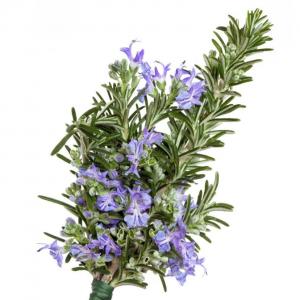
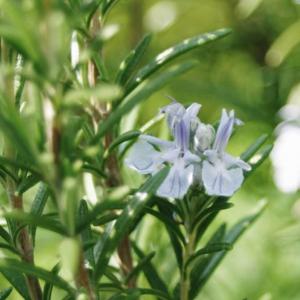
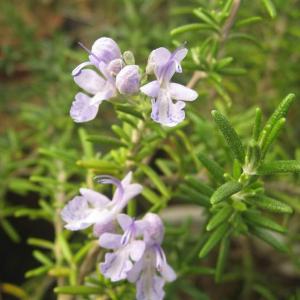
Possible health benefits of rosemary
Rich source of antioxidants and anti-inflammatory compounds- these are thought to help boost the immune system and improve blood circulation. Laboratory studies have shown rosemary to be rich in antioxidants, which play an important role in neutralizing harmful particles called free radicals.
Improving digestion - In Europe rosemary is often used to help treat indigestion - Germany's Commission E has approved it for the treatment of dyspepsia. However, it should be noted that there is currently no meaningful scientific evidence to support this claim.
Enhancing memory and concentration - blood levels of a rosemary oil component correlate with improved cognitive performance, according to research in Therapeutic Advances in Psychopharmacology, published by SAGE.
Neurological protection - scientists have found that rosemary is also good for your brain. Rosemary contains an ingredient, carnosic acid, that is able to fight off free radical damage in the brain.
According to a study published in Cell Journal, carnosic acid "may be useful in protecting against beta amyloid-induced neurodegeneration in the hippocampus."
Prevent brain aging - Kyoto University researchers in Japan revealed that rosemary may significantly help prevent brain aging.



8
2



